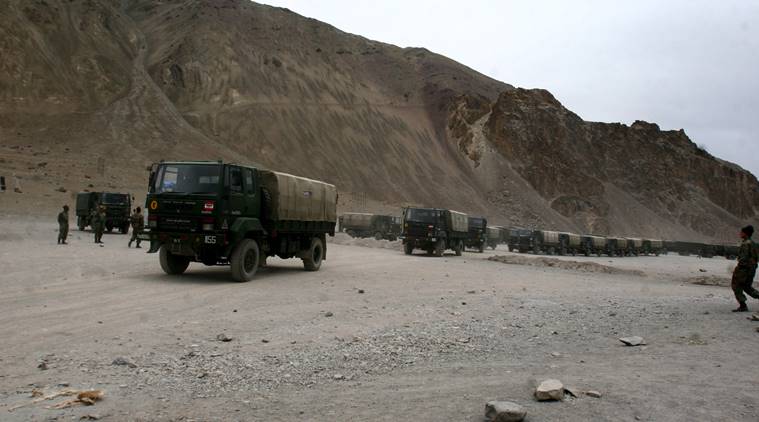
Failure of talks means tougher times for India-China ties

The failure of the latest round of talks between India and China to resolve a 17-month-long border impasse isn’t much of a surprise, given the fact that the two countries are moving farther away from each other in their relationship.
While the border standoff itself is a cause for mutual alienation, a fast-changing geopolitical situation brought about by the unseemly withdrawal of the United States from Afghanistan, has added to the widening gulf between the two Asian biggies.
The 13th round of talks between the Army Commanders of India and China ended with both sides accusing each other of unreasonableness and rigidity in their positions on resolving the border impasse in the Ladakh region.
The specific aim of the talks, held near Chushul-Moldo border point in eastern Ladakh on territory that the Chinese claim, was to arrive at a disengagement in Hot Springs, a key flash point between the two.
The talks were held in the background of optimism after China withdrew from the Gogra region two months ago. Prior to that, both sides had mutually moved away from each other in the Pangong Tso (lake) and Galwan valley, the site of a bloody battle that saw at least 20 Indian and four Chinese soldiers die in hand-to-hand combat in June 2020.
Also read: Issues remain, says Army after 13th round talks with China on Ladakh
The failure of talks on Sunday has extinguished hopes of a gradual but steady improvement in the border situation. Moreover, these talks were crucial as that would have meant that troops from both countries could have left the area and gone home to avoid the freezing winters in the region. Now that the talks have derailed, the soldiers will have a tough task of living through the nightmarish winter months in the high altitudes of the Himalayas. Unfortunately for the troops, politics is more often than not heartless where human beings don’t count even if they happen to be from one’s own country.
From the time the Gogra talks succeeded, the geopolitical situation has changed quite dramatically. In Afghanistan, China has been given the red-carpet welcome by the ruling Taliban, while India has all but been shown the door. If the situation continues, it is more than likely that China will complete the projects that India left behind, mainly in infrastructure.
Beijing is also piqued by the continued dalliance of India with the United States and particularly its involvement with the Quad group, which is viewed by New Delhi as some sort of protective talisman against Chinese aggression.
The failure of the talks also comes in the background of global, mainly Western, resentment against the rise of Chinese power. Beijing has not just benefited from the exit of the US from Afghanistan, but has also taken to flexing its muscles in the South China sea where it has unilaterally announced a variety of decisions that make it insecure for the world’s freight ships to sail through the arterial highway that plays host to 22 percent of the global trade estimated at $5.3 trillion annually.
Over the last two decades, China and Russia have attempted economic stability in the Central Asian region as part of the CSTO (Collective Security Treaty Organisation) including Tajikistan, Kazakhstan and Kyrgyzstan to the north of Afghanistan and bordering Xinjiang in China. For Beijing which has already announced the Belt and Road Initiative (BRI) for Afghanistan, its attempts at stability in the region is due to an inherent fear of Islamism which could affect its own province of Xinjiang, home to a restive Muslim population. In Beijing’s calculations, helping the Taliban could prevent the Islamic group from fomenting trouble among China’s Muslim population.
Also read: There are reasons why China is so keen on friendship with Taliban
With Russia too getting closer to China in the context of its own distancing from the Western powers, Beijing has virtually no resistance to in its plan to share dominance with Moscow in the region.
For India, which was hoping to get something positive out of the talks, the stalemate poses its own set of challenges. While the Chinese threat remains, the potential of the Quad is now in question. For New Delhi which may have hoped that Quad would turn into a quasi-military grouping like NATO, it now seems that will not happen. The Joe Biden administration, in a surprise move, announced the formation of the AUKUS, a military grouping led by Washington and comprising Australia and the United Kingdom – both time-tested allies.
With this, the US has made clear that it will go to any extent to protect its interests vis-a-vis China in the Asia-Pacific region. In the process India has been cut out of a closer equation with the US and the Quad reduced to all but a diplomatic lobby that, at the most, is expected to growl if Beijing makes any unwanted advances on India in the border areas of the Himalayas.
Also read: India rejects China’s allegations, holds Beijing responsible for tension at LAC
For India, the situation vis a vis China presents an existential challenge. For the last 70 years, there has been an attempt on both sides to keep relations on an even keel. Within the country China is perceived to be an equal power while the reality is far from it. Beijing is way ahead on almost all parameters.
While getting closer to China by sacrificing its own interests may be politically untenable, how much and for how long can New Delhi hold out against an aggressive Beijing (reports of Chinese transgressions have come in recent days in Uttarakhand and Arunachal Pradesh) is something that must be worrying South Block.


